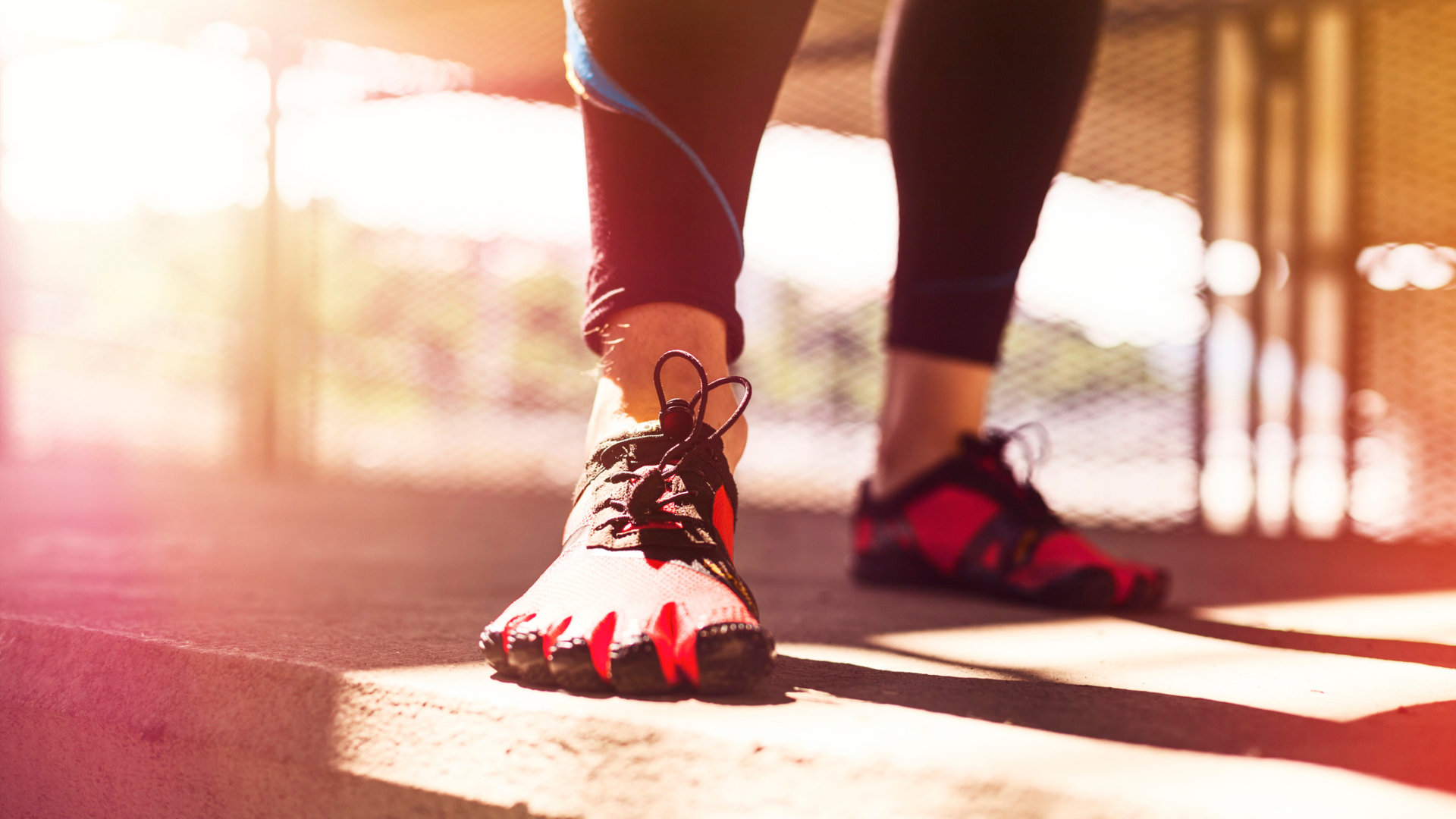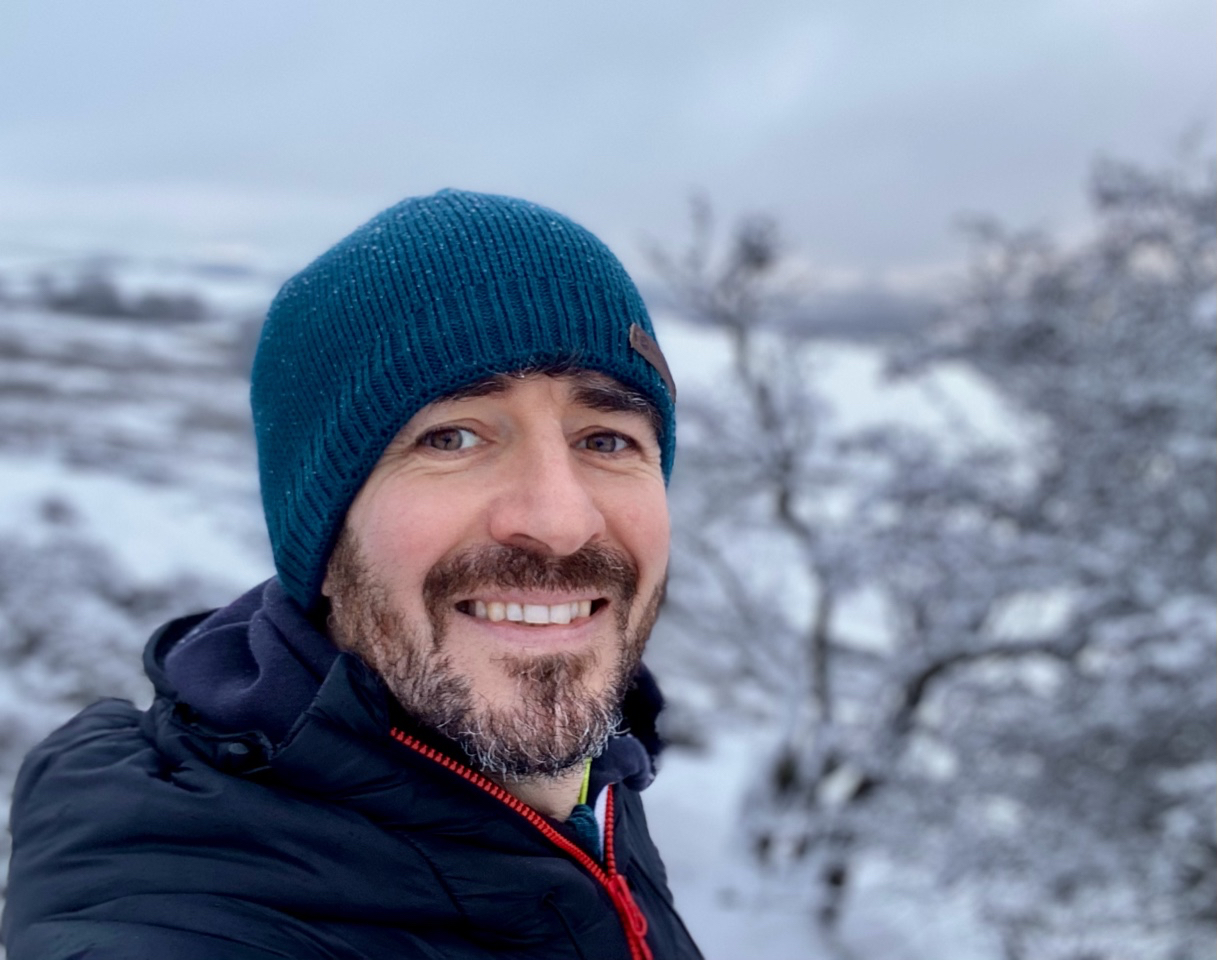What is barefoot running? An expert guide to going minimal with your footwear
If you’re baffled by people who wax lyrical about the benefits of barefoot running, even while they’re clearly running around in shoes – read on

The first thing to understand about barefoot running is that it doesn’t necessarily involve running with nothing on your feet. Eh? Yes, it is a bit confusing, but barefoot running actually describes a style of running – one that comes more naturally when there is less padding and protection between your feet and the ground.
Barefoot running is a type of running when your foot strikes the ground forefoot first, rather than heel first. This synchronizes automatically with a shorter stride and a faster turnover, because a longer stride will necessitate a heel strike, as you’re reaching forward with your front foot.
Back when everyone was ‘jogging’ and most people stuck to roads – before the term trail running had been coined – almost all road and trail running shoes had much more cushioning beneath the heel than under the toe, and this steep drop encouraged heel strike. However, a heavy heel strike can act as a braking force, sending a shockwave up your body causing more stress in your knees.
The theory behind barefoot is that adjusting your cadence so your foot lands under your body’s mass, rather than out in front, is a more natural way of running that will be kinder to your body. Barefoot running shoes are simply shoes that encourage this ‘natural running’ by placing your foot in a neutral position – no drop from heel to toe, and no support features. They also remove the temptation of heel striking by limiting the amount of cushioning under the heel.
Where did it all start?
In 2009, Born To Run by Christopher McDougall (one of Advnture's best running books) was published. In this enormously influential best-selling book, the reader is introduced to the reclusive Tarahumara native Mexican tribe, many of whom can run over a hundred miles in nothing more than self-made sandals known as Huaraches.
We are told the Tarahumara seldom get injured, and we’re entertained with an emotive narrative about the tribe, through which the author weaves a ‘sciency’ thread. McDougall essentially expounds a theory that we humans have evolved to be runners, and that our unique upright physiology allows us to breath well and sweat efficiently enough to literally out-run our prey – a technique known as ‘persistence hunting’.
And of course our ancestors would have been doing all this long before Nike introduced the first ‘sneakers’ with thick waffle soles and raised heels. The central claim in the book is that these kinds of running shoes are directly related to myriad running injuries that we’ve been battling since the ’70s. It’s a pretty convincing argument, and thousands of runners – me included – were inspired to ditch the cushioning, high heels and protection of mainstream running shoes and try a ‘minimal’ approach instead.
Advnture Newsletter
All the latest inspiration, tips and guides to help you plan your next Advnture!
Bare necessities
By 2010 everyone, it seemed, was talking about ‘barefoot running’ with a forefoot landing style and a reduced stride length. For the real aficionados, gulping down a kind of frogspawn-textured drink made of chia seeds was all the rage too. Good times.
There wasn’t too much shoe chat; just the two inter-related theories of dispensing with socks and shoes altogether, or running in Vibram’s new, slightly simian looking, FiveFinger shoes. I started with the slightly more sensible option of wearing the ‘monkey feet’ shoes.
I distinctly remember ‘trying’ to run on my forefeet at a slow jog and doing something horrible to my calves in a few minutes. The trick, I learned, is not over thinking things. Do what comes natural. Running fast helped too, as being up on you toes happens automatically at speed.
As for the genuinely naked feet option – that was surprisingly useful too. I found a quiet lane, learned to not run near the sides where all the stones are deposited, and off I jogged. As useful as the skin-on-tarmac method was, a few thorny incidents pushed me back to the FiveFingers.
I soon realised, however, that my preferred shoe design included a little midsole, although the whole experience had reduced the drop and stack of my ‘ideal shoe’. Now I always go for running shoes with 0 to 4mm drop and a low stack. And I still go back to super minimal shoes for sporadic ‘tune-up’ runs, because it’s nice to feel really connected to the trail.
My journey – going from standard running shoes with a large heel, through a true barefoot period, to arrive at a place where I’m most comfortable running in minimal shoes, with little to no drop – is one that many others have been on. And most of us still run barefoot/natural in terms of style.
Natural running
As we have seen, the word ‘barefoot’ is really a misnomer. The phrase ‘natural running’ is actually much more useful, as it aptly describes the experience of running in minimal shoes.
Even when you go back to the Tarahumara, we’re talking about people running in simple sandals, not their naked feet. Hundreds of thousands of years ago our ancestors would have quickly discovered that wrapping some animal skin around their feet was a minimum requirement to protect themselves from hunt-spoiling injuries.
The dangers posed by thorns, sticks and sharp rocks have only increased over time – with the addition of broken glass, dog turds and hypodermic needles – so, unless you have a beach or a very clean park nearby, we think actual barefoot running is best avoided. And there are plenty of minimal shoes to choose from to help deliver the experience, and potential benefits, of barefoot/natural running.
Benefits of barefoot
The first claim made by natural running/barefoot aficionados is the benefit of increased ground-feel and the subsequent strengthening of the muscles in your feet. Some also describe their feet actually getting shorter as their foot arches strengthen and they may develop wider feet as the forefoot becomes more active and their toes learn to splay naturally.
Possibly the biggest potential benefit, though, is a reduction in injuries caused by gait and form. Runners in minimal shoes automatically shorten their stride and increase their cadence, reducing the intensity of shocks further up their body.
The idea is that your body will naturally return to what it has evolved to do, and your form will improve. If you’re happy in neutral running shoes, this transition to minimal shoes and a more natural form may come, well, naturally. If you’ve battled with collapsed arches and bought shoes with pronation guidance to control your gait, your journey to ‘barefoot’ may be more tricky. See a podiatrist or running specialist for more information.
There’s another change of form that may come from shorter strides and an improved foot-strike; runners in minimal shoes will often be observed with a straighter body posture, less stooping at the hips, but with a slight forward lean to their whole body. Adopting this gait is often described as feeling like falling forwards, using gravity to help move your body. This is the antithesis of the ‘heel strike’ where the body leans backwards and the initial impact of each stride is actually a braking force, which isn’t ideal when you trying to move fast and fluidly.
- Learn how to start barefoot running in this guide
Glossary of barefoot running terms: a useful guide to minimalist lingo
Barefoot Slightly misleading term for the whole movement.
Natural running Preferred term for the ‘barefoot’ scene.
Minimal Reduced or no midsole. Simplified features for more naked feel.
Drop or differential Difference of stack between front and rear of the shoe. Close to zero in barefoot style shoes.
Stack The height your foot is off the ground. Usually including insole, midsole and outsole.
Foot-shaped More ergonomic for healthy feet. Not ‘pointy’ or restrictive for the big toe.
Mid-pack fell-plodder Paul has been writing about his outdoor adventures for about ten years. Initiated by a move from Coventry to the Peak District in 2010, Paul quickly evolved from jogger, reluctant gym-goer and occasional camper to full-blown fell-obsessed trail runner and wild camping adventurer. Paul’s 2016 attempt at the Cape Wrath Ultra was only curtailed (on day six!) by an infected big toe; the story of its Vesuvius style release, with supporting photos, is something Paul is too keen to share.

